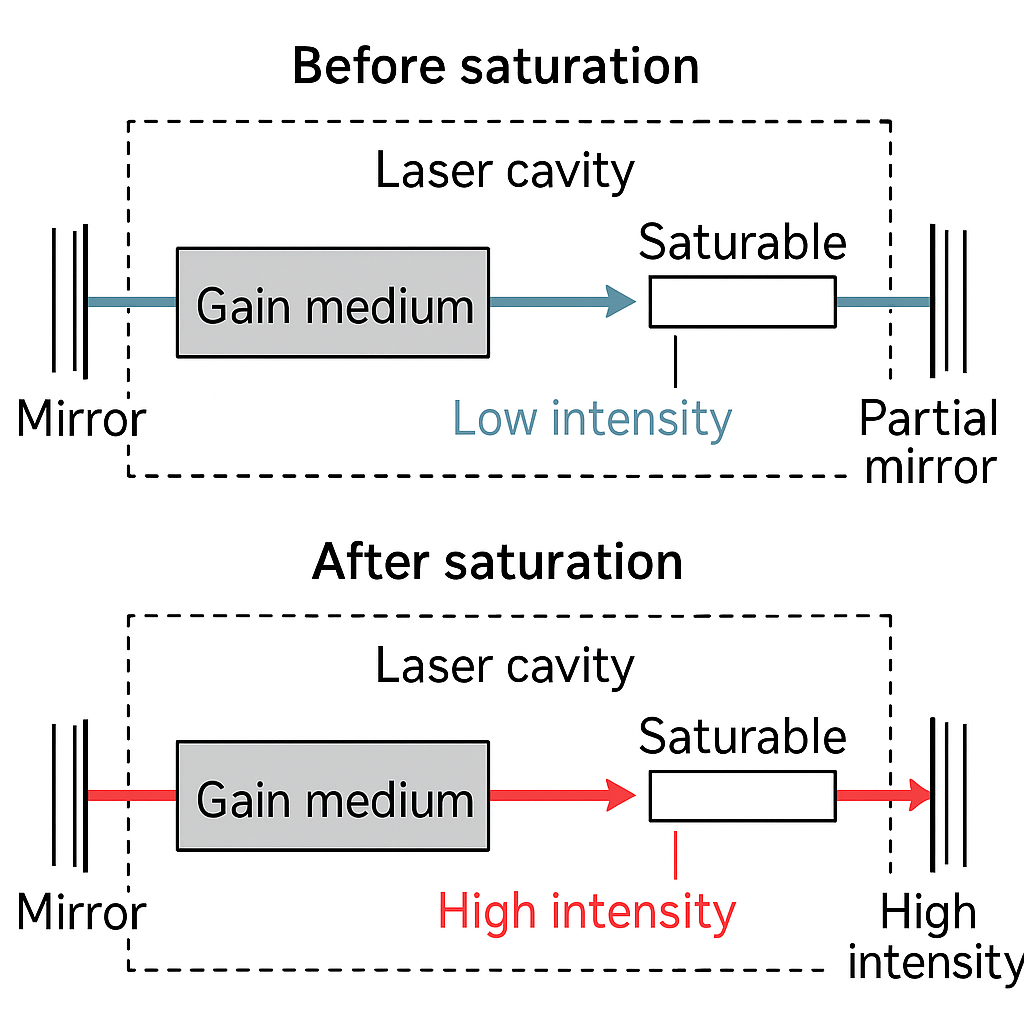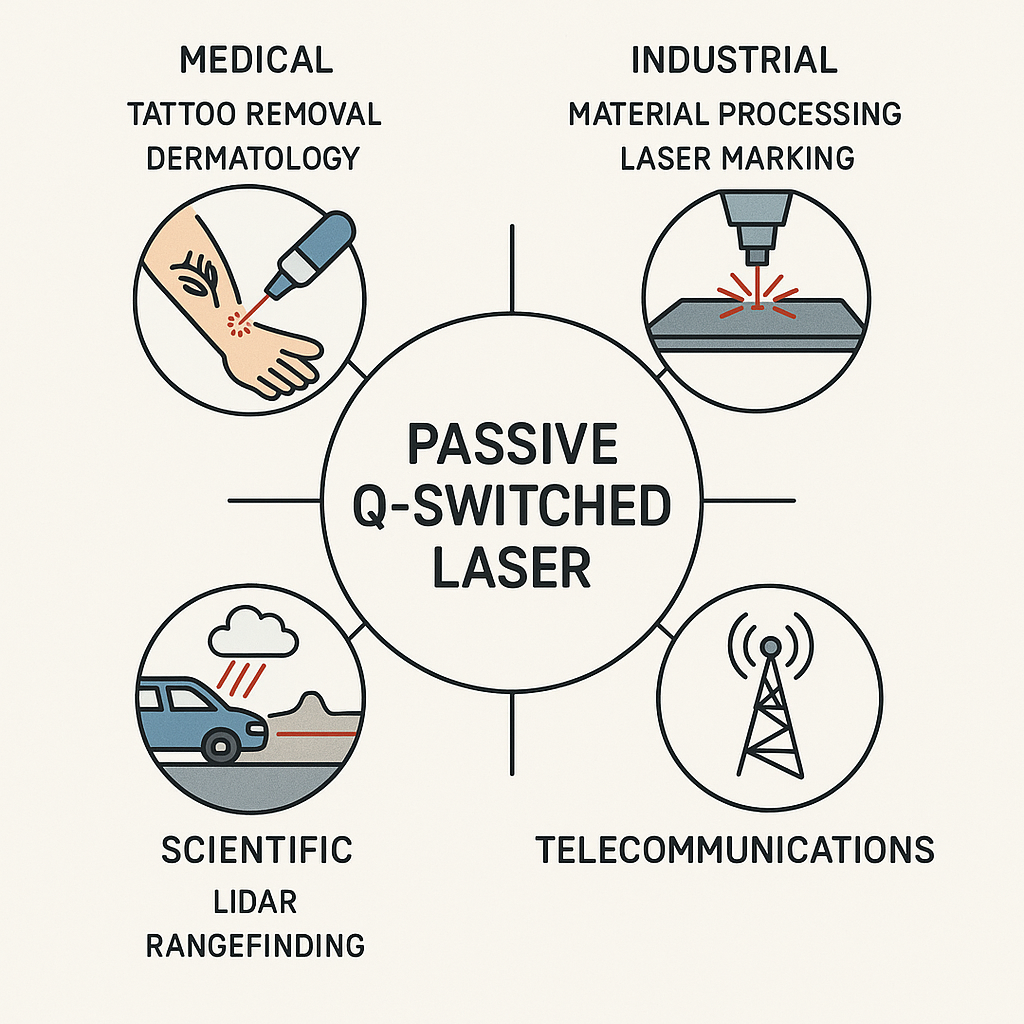Passive Q-switching is a smart, elegant way to make high-energy laser pulses using special optical materials. It’s now key for many laser uses because it’s simple and works reliably.
Special optical parts called saturable absorbers are at the core of passive Q-switching. They’re made from organic dyes or doped crystals like Cr:YAG.

Saturable absorbers have an unique trait—they go from opaque to transparent when hit by high-intensity light. When energy density hits a certain threshold, the material “saturates” or “bleaches.” This makes its transmittance jump way up. The bleaching happens because the absorber’s spectral transition gets saturated.
Passive Q-switched lasers work in a clear temporal pattern. At first, the saturable absorber adds high losses on the laser cavity. This stops oscillation while energy builds up on the gain medium.
As the gain medium keeps absorbing pump energy, its stored energy grows. Eventually, the laser gain beats the resonator loss. At this point, the absorber starts to saturate. This makes intracavity power rise fast. The process continues until the gain saturates to match the resonator loss. Then, a short, high-energy pulse comes out.
When you put a saturable absorber (that absorbs a lot at the laser wavelength) inside a laser resonator, it initially stops laser oscillation by adding big losses. As pump energy keeps going, the gain increases during the pump pulse. Eventually, it exceeds the round-trip loss.

Once this threshold is hit, the optical intensity inside the cavity shoots up. This makes the passive Q-switch saturate. Under these conditions, cavity losses drop a lot. Then, Q-switched pulses form. The whole process happens on its own—driven by the laser radiation, not external controls.
Passive Q-switching has big advantages over active methods. The switching process is triggered by the laser itself. So you don’t need the high-voltage drivers or RF modulators active setups use.
Passive systems are simple in design, compact, robust, and cheap to make. These traits make them perfect for applications where reliability and simplicity matter most.
But passive Q-switching has some clear limits. External control isn’t as accurate as active methods. This means pulse timing is less precise. Also, passively Q-switched lasers usually put out less energy than electro-optical or acousto-optic ones. The residual absorption in saturable absorbers causes big losses in the laser cavity—this is why energy is lower.
Passive Q-switched lasers are used in many fields because they’re reliable, compact, and cheap. In medicine, they’re used for dermatology treatments and tattoo removal—their precise energy delivery helps.

In industry, they’re used for material processing, marking, and precision cutting. Their compact design makes them easy to put into portable devices or systems with little space.
In science and military, they’re used for range finding, LiDAR, and remote sensing—their reliable pulse generation is key. Their simplicity and robustness also make them popular for telecommunications and research.
New saturable absorber materials have made passive Q-switched lasers better. Novel materials like carbon nanotubes, graphene, and other 2D materials are promising next-gen saturable absorbers. They have better performance traits.
The market for passive Q-switching components is growing. This is driven by demand from telecom, medical, and defense industries. Tech advances are focused on improving pulse energy, shortening pulse duration, and making systems more efficient.
Passive Q-switching is an elegant, effective way to make high-energy laser pulses—no need for complex active systems. By using the natural properties of saturable absorbers, these systems work great with minimal complexity.
Even though they have limits in control precision and output energy, passive Q-switched lasers are still widely used. Their simplicity, reliability, and cost-effectiveness make them valuable. As new materials and designs come out, their capabilities will keep expanding. This will make them even more important in laser technology.
Contact: Jason
Phone: +8613337332946
E-mail: [email protected]
Add: Hangzhou City, Zhejiang Province, China